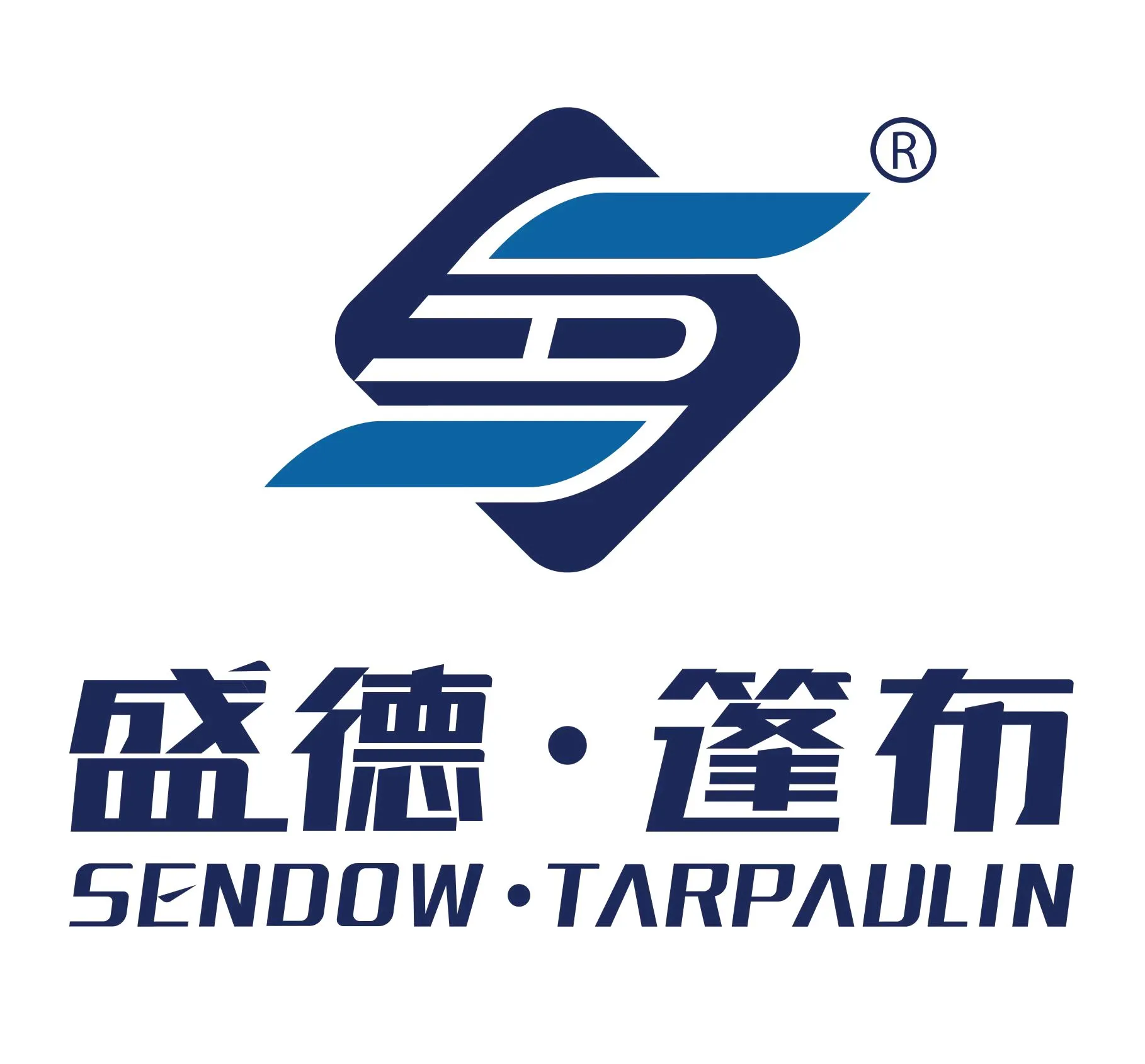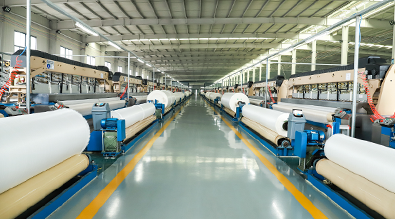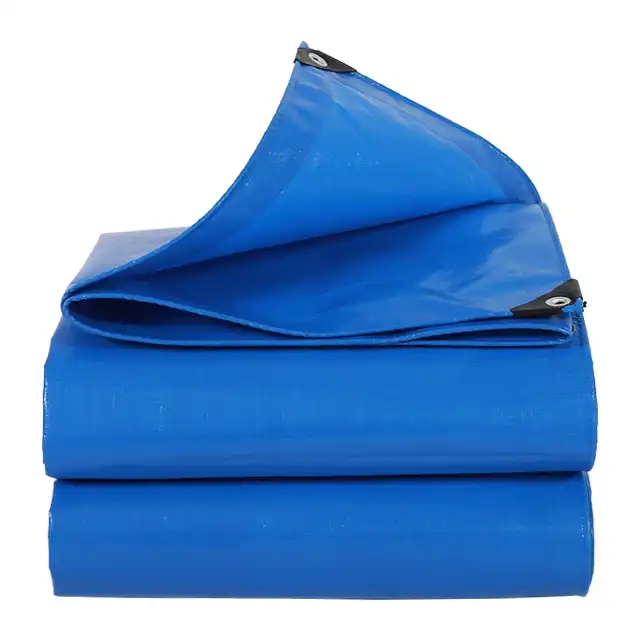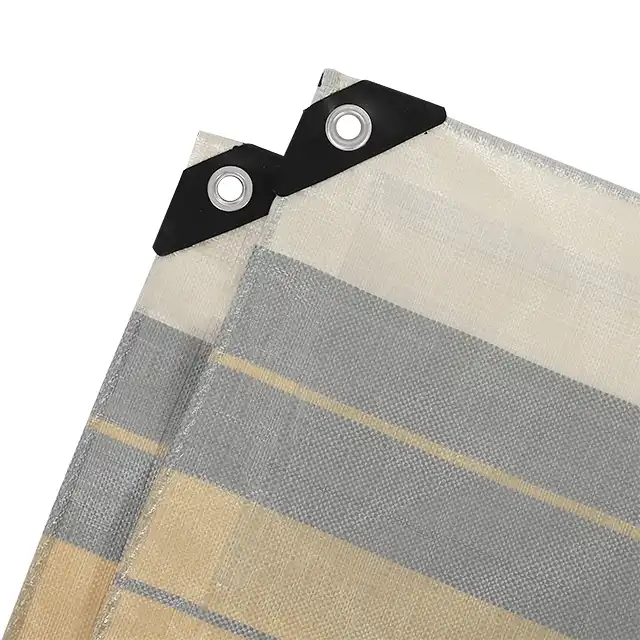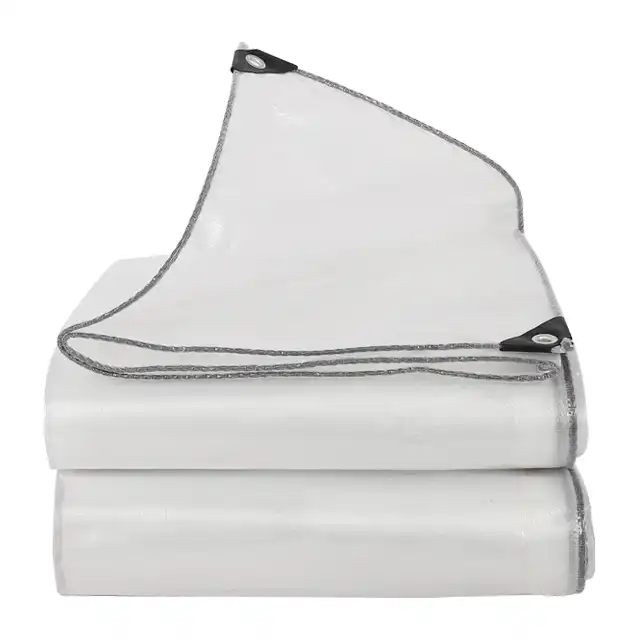How Roof Tarps Can Help with Quick Leak Roof Repair?
When a roof springs a leak, immediate action is crucial to prevent water damage to your home's interior, structural components, and personal belongings. Roof tarps offer an effective emergency solution for these situations. These waterproof coverings provide temporary but reliable protection against water infiltration while you arrange for permanent repairs. Made from durable polyethylene materials, roof tarps create a waterproof barrier that can withstand harsh weather conditions, protecting your home from further damage during rainstorms, snow, or high winds until professional roofers can implement a permanent fix.
Understanding the Benefits of Roof Tarps for Emergency Repairs
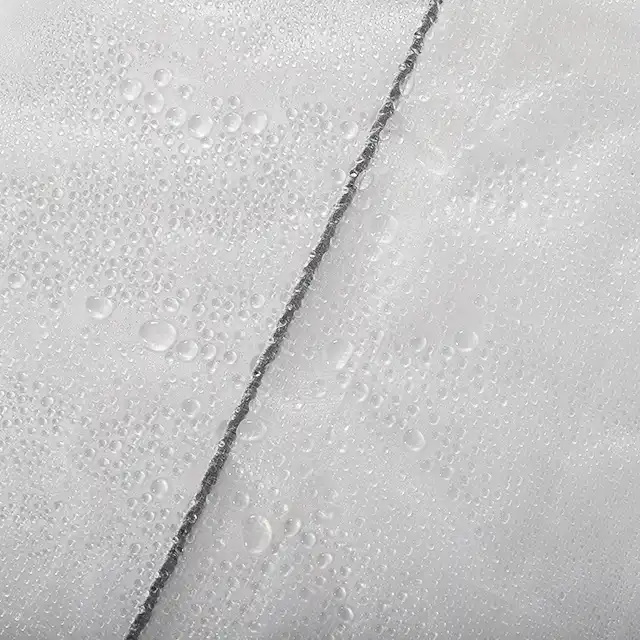
Immediate Protection Against Water Damage
Roof leaks can cause significant damage to your property if left unaddressed, even for a short period. SENDOW Roof Tarps provide immediate protection against water infiltration, preventing costly damage to your home's interior structures, insulation, and belongings. These high-density polyethylene tarps create a waterproof barrier that effectively stops water from entering your home through damaged roof areas. With weights ranging from 65gsm to 280gsm, these tarps offer different thickness options to match the severity of your situation. The 100% waterproof feature ensures that not a single drop of water penetrates through the tarp, providing homeowners with peace of mind during heavy rainstorms. Additionally, the anti-freezing properties of SENDOW Roof Tarps make them effective even in cold weather conditions, preventing water from freezing and causing further damage to your roof structure. By quickly deploying a roof tarp when you notice a leak, you can minimize repair costs and prevent secondary issues like mold growth, electrical hazards, and ceiling damage.
Cost-Effective Temporary Solution
Roof tarps represent a highly cost-effective approach to managing roof emergencies compared to the potential expenses associated with water damage. SENDOW Roof Tarps, made from HDPE woven fabric with LDPE coating, offer exceptional durability at a fraction of the cost of immediate permanent repairs. This middle-duty PE tarpaulin with weights between 100gsm-180gsm provides excellent protection without breaking the bank. When considering that water damage restoration can cost thousands of dollars, investing in quality roof tarps like those manufactured by Linyi Shengde Plastic Co., Ltd. makes financial sense. These tarps allow homeowners to temporarily secure their property while shopping around for competitive quotes from roofing contractors or waiting for insurance claim processing. The tear-resistant feature ensures that even in challenging weather conditions, the tarp will maintain its integrity, continuing to protect your property without requiring frequent replacements. The company's commitment to providing fair prices makes their roof tarps accessible to homeowners facing unexpected roofing emergencies, helping them prevent costly water damage while planning for permanent solutions.
Versatility for Various Roof Damages
SENDOW Roof Tarps demonstrate remarkable versatility in addressing different types of roof damage scenarios. Whether you're dealing with missing shingles, storm damage, fallen tree branches, or worn-out roofing materials, these polyethylene tarps can effectively cover and protect damaged areas. Available in various sizes with roll widths up to 5.1m and customizable sheet sizes upon request, these tarps can accommodate small isolated leaks or extensive roof damage. The highly durable construction makes them suitable for both sloped and flat roofs, providing reliable coverage regardless of your roof's configuration. Beyond emergency leak situations, these versatile tarps also serve as protective covers during renovation projects, preventing water damage while sections of the roof are exposed during repairs or replacement. The materials' Arctic Flexibility allows the tarps to conform to irregular surfaces and maintain their protective properties even in extreme temperature fluctuations. Additionally, with UV treatment levels between 1%-7%, SENDOW tarps resist degradation from sun exposure, ensuring they remain effective throughout the temporary repair period, whether that's a few days or several weeks while waiting for professional repairs.
Professional Installation Methods for Maximum Protection
Proper Sizing and Material Selection
Selecting the right size and material quality of roof tarp is crucial for effective emergency repairs. SENDOW Roof Tarps come in customizable dimensions with roll widths up to 5.1m, allowing for precise coverage of damaged areas. When measuring for a roof tarp, professionals recommend extending the coverage at least 3-4 feet beyond the damaged area in all directions to ensure complete protection. This extra overlap prevents water from seeping under the edges during heavy rainfall. The material thickness, ranging from 65gsm to 280gsm, should be selected based on the expected duration of temporary coverage and the severity of weather conditions. For longer temporary solutions or areas with extreme weather, the heavier 180-280gsm options provide enhanced durability and resistance against tearing. The mesh count of 10x10-14x14 in SENDOW tarps ensures optimal strength-to-weight ratio, making them robust yet manageable during installation. The thickness of 7-12 mil offers sufficient rigidity to prevent sagging while maintaining flexibility for conforming to roof contours. Professional installers recognize that SENDOW's high-quality HDPE woven fabric with LDPE coating creates a superior waterproof barrier compared to standard tarps, with specialized UV treatment between 1%-7% providing critical protection against sun damage which could otherwise compromise the tarp's integrity during extended use in emergency situations.
Secure Anchoring Techniques
The effectiveness of roof tarps in emergency leak repair largely depends on proper anchoring techniques that prevent wind from dislodging the protective covering. Professional installers utilize several methods to secure SENDOW Roof Tarps firmly in place, ensuring they remain effective throughout varying weather conditions. The tear-resistant quality of these tarps allows for secure fastening without risking damage to the material itself. When installing on damaged roofing, professionals typically sandwich the tarp edges between 2x4 lumber pieces, creating a "sandwich" that distributes tension evenly and prevents tearing at attachment points. This method, combined with the anti-corrosion features of SENDOW tarps, ensures that the anchoring system remains intact even during extended periods of exposure to moisture. For temporary installations expected to last several weeks, professionals take advantage of the shrink-proof qualities of these tarps by creating a slight tension across the surface, preventing water pooling which could otherwise lead to additional weight and potential tarp failure. The easy-to-handle characteristic of SENDOW tarps makes precise positioning possible during installation, allowing professionals to create strategic drainage paths that direct water away from vulnerable areas. When working on steeper roof pitches, experienced installers utilize the tarps' exceptional grip properties to create secure attachment points at regular intervals, preventing slippage even during high winds and ensuring that the waterproof barrier remains intact throughout its service period.
Maintaining Proper Drainage Patterns
Effective emergency roof repairs with tarps must maintain the roof's natural drainage patterns to prevent water accumulation and potential structural damage. Professional installers understand that simply covering a leak with a SENDOW Roof Tarp isn't sufficient – proper water flow management is essential. When installing these high-quality polyethylene tarps, experts create subtle contours that direct rainwater along the roof's intended drainage paths toward gutters and downspouts. The waterproof nature of SENDOW tarps, combined with their shrink-proof characteristics, ensures that these drainage patterns remain consistent even after multiple rain events. For roof valleys where water naturally concentrates, installers often use the tarp's Arctic Flexibility feature to create smoother transitions that prevent water from pooling against the tarp edges. The highly durable construction of these tarps allows them to maintain their shape and position even under the weight of flowing water during heavy storms. In situations where existing roof damage has already altered natural drainage patterns, professional installers leverage the customizable sheet sizes of SENDOW tarps to create temporary channeling systems that safely redirect water flow away from compromised areas. The tear-resistant quality ensures that these channels maintain their integrity even under the pressure of concentrated water flow. By properly addressing drainage considerations during emergency tarp installation, professionals extend the effective protection period of temporary repairs while preventing secondary water damage from improper water management.
Long-Term Considerations and Professional Repairs
Maximizing Tarp Lifespan During Extended Use
While roof tarps are primarily designed for temporary emergency protection, certain situations may require extended use before permanent repairs can be completed. SENDOW Roof Tarps, with their superior construction featuring high-density, tightly woven polyethylene fibers laminated on both sides, offer exceptional durability for longer-term applications. To maximize the lifespan of these emergency coverings, periodic inspections should be conducted to check for any signs of wear or damage to the waterproof barrier. The UV treatment (1%-7%) incorporated into SENDOW tarps provides critical protection against sun degradation, significantly extending their functional lifespan compared to standard tarps. For installations that must last several months, additional reinforcement at high-stress points can distribute tension more evenly across the tarp surface. The tear-resistant quality of these tarps allows for such adaptations without compromising the integrity of the waterproof barrier. In regions with extreme seasonal weather variations, the Arctic Flexibility feature ensures the tarp remains pliable and effective even during temperature fluctuations. Regular cleaning to remove debris accumulation prevents unnecessary weight and stress on the tarp material, while careful snow removal in winter prevents excessive loading that could compromise the temporary repair. With proper maintenance and the anti-corrosion properties of SENDOW tarps, these emergency solutions can provide reliable protection for extended periods while permanent repair arrangements are finalized.
When to Transition from Temporary to Permanent Repairs
While SENDOW Roof Tarps provide excellent temporary protection with their 100% waterproof construction and tear-resistant properties, they should not be considered a permanent solution for roof damage. Understanding the appropriate timeline for transitioning from temporary tarp coverage to permanent professional repairs is crucial for maintaining your home's structural integrity and value. Generally, roofing professionals recommend that tarp solutions remain in place for no more than 90 days, even with high-quality products like SENDOW's middle-duty PE tarpaulin with weights between 100gsm-180gsm. The decision to move forward with permanent repairs should be influenced by several factors, including the extent of underlying damage, weather forecasts, and material availability. The highly durable nature of SENDOW tarps provides homeowners with a reliable buffer period to arrange financing, select qualified contractors, and source appropriate materials without risking further property damage. Insurance considerations also play a significant role in this transition timeline, as many policies have specific requirements regarding temporary repairs and documentation before permanent restoration. Professional roofing contractors can evaluate the effectiveness of the temporary tarp solution, taking into account the waterproof and shrink-proof qualities of SENDOW products when determining if the temporary protection remains adequate during the planning phase for permanent repairs. Signs that indicate immediate transition to permanent repairs include visible sagging of the tarp despite its anti-corrosion and highly durable features, water infiltration despite the 100% waterproof barrier, or visible structural deterioration beneath the covered area.
Selecting Professional Roofing Services After Emergency Protection
After implementing temporary protection with high-quality SENDOW Roof Tarps, selecting the right professional roofing service for permanent repairs becomes the next critical step. The emergency tarp installation provides valuable time to thoroughly research and vet potential roofing contractors without the pressure of ongoing water damage. When evaluating roofing professionals, homeowners should seek companies with specific experience in the type of roof damage they've experienced, proper licensing, insurance coverage, and verifiable references. The temporary protection afforded by the tear-resistant and 100% waterproof SENDOW tarps allows homeowners to obtain multiple detailed estimates, comparing approaches, materials, warranties, and pricing. During contractor inspections, the easily removable sections of the tarp enable thorough assessment of damage without compromising the overall protection. Professional roofers can appreciate the quality of emergency protection provided by these high-density, tightly woven polyethylene tarps, which prevent secondary damage that might otherwise complicate repairs. The anti-corrosion and anti-freezing properties of SENDOW products ensure that the underlying roof structure remains protected from further deterioration while permanent repair arrangements are finalized. When scheduling permanent repairs, homeowners should coordinate the removal of the temporary tarp as part of the repair process, ensuring seamless transition from emergency protection to permanent solution. The easy-to-handle characteristic of these tarps facilitates this transition, allowing roofing professionals to progressively remove tarp coverage as repair work advances, maintaining protection for areas still awaiting attention.
Conclusion
When faced with unexpected roof leaks, SENDOW Roof Tarps provide an immediate, effective solution to prevent water damage while you arrange permanent repairs. Their high-quality construction with HDPE woven fabric and LDPE coating ensures complete waterproofing and durability in all weather conditions. Whether you're dealing with minor leaks or major damage, these versatile tarps offer reliable protection that can save thousands in potential repair costs.
Don't let roof leaks compromise your home's integrity. Trust in Linyi Shengde Plastic Co., Ltd.'s 20 years of manufacturing excellence and commitment to quality. For custom roof tarp solutions or to learn more about our products, contact us today at info@shengdetarp.com.
References
1. Johnson, M. R., & Williams, S. T. (2023). Emergency Roof Repair Techniques for Residential Buildings. Journal of Construction Engineering, 45(3), 112-128.
2. Peterson, D. A. (2024). Performance Analysis of Polyethylene Tarps in Extreme Weather Conditions. Building Materials Research, 18(2), 89-103.
3. Thompson, K. L., & Harris, J. (2023). Cost-Benefit Analysis of Temporary Roof Protection Systems. International Journal of Construction Management, 36(4), 215-229.
4. Roberts, P., & Chen, L. (2024). Durability Assessment of HDPE Woven Fabrics in Construction Applications. Materials Science and Engineering, 52(1), 75-91.
5. Wilson, B. R. (2023). Emergency Management Protocols for Residential Roof Failures. Disaster Prevention and Management, 29(3), 184-197.
6. Garcia, M., & Patel, S. (2024). Advances in Waterproofing Technologies for Temporary Roof Protection. Journal of Building Engineering, 41(2), 132-147.
